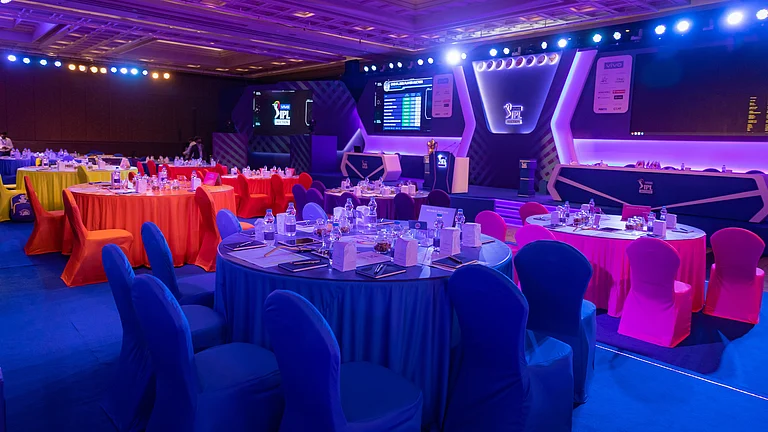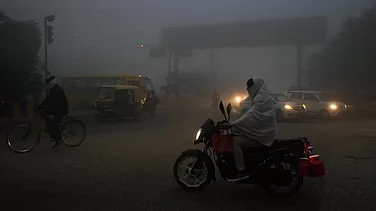If you plan to visit Kashmir Valley this summer for a brief respite from the rising temperatures in the plains, do spend a couple of hours extra in Srinagar. Once you reach The Bund—a Jhelum River embankment—look for an age-old photo studio.
Chances are that you may miss it at the first glance as it’s tucked away in the midst of three shops—Suffering Moses, Asian Carpets, and Goodfellas restaurant. And then the name ‘Mahatta & Co’, written in red, will catch your attention. It’s probably the longest-surviving studio in the country which opened way back in 1915. It has stood the test of time and witnessed periods of relative calm, decades of conflict, political unrest, and the recent change in the status of the Valley.
For the past five decades, 71-year-old Ghulam Muhammad, the caretaker of Mahatta & Co, has been opening the doors of the studio on the dot at 11 AM. The door is a divide between now and the era gone by. Everything has changed in the vicinity except for the studio and the Jhelum that flows in front of it.
The shops next to the studio were set up in the 1950s. They have undergone renovation to keep up with the changing times, but time has stood still for Mahatta & Co. The studio still represents the old historic architecture. One has to walk through a small lawn to reach the studio. The French window pane still has hand-painted posters of camera and film brands. They include Konica, Kodachrome, and Zeiss-Ikon, among others.
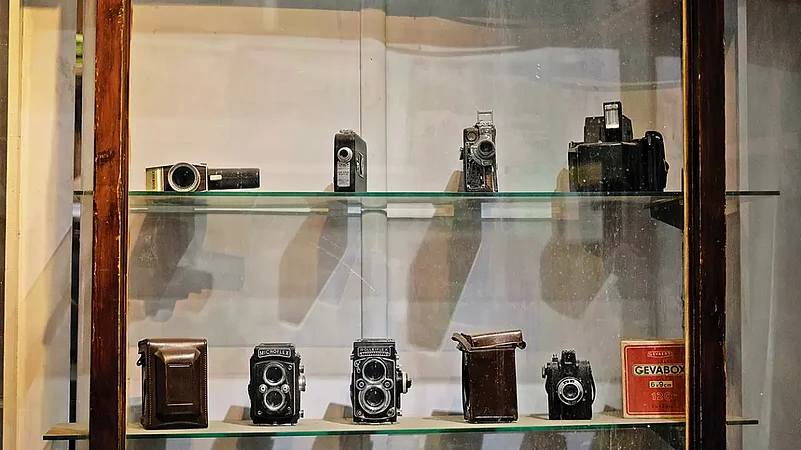
Inside are antique film cameras, reels, once-precious-now-obsolete equipment like bulbs, flashes, camera cases, and thousands of images that have captured Kashmir’s art, craft, people, and politics over several decades. Preserved in each frame is the past of every nook and corner of the Valley.
The décor of the studio is done very thoughtfully. The lights have been set up so aesthetically that they give the studio a vintage touch. Cameras have been placed on the shelves in such a way that one instantly feels like touching them. Sadly, they are no longer available to the customers anymore.
In 1912, two brothers, Amar Nath Mehta and Ram Chand Mehta, visited Kashmir as tourists. They were so mesmerised by its beauty that they ended up opening a studio. Back in the day, only affluent people could think of buying a camera. Photography was not for the common people.
Muhammad is the oldest employee of the studio who knows more about the history of “M&C” than Hemant Mehta, who is the grandson of RC Mehta and is presently looking after the business at the studio.
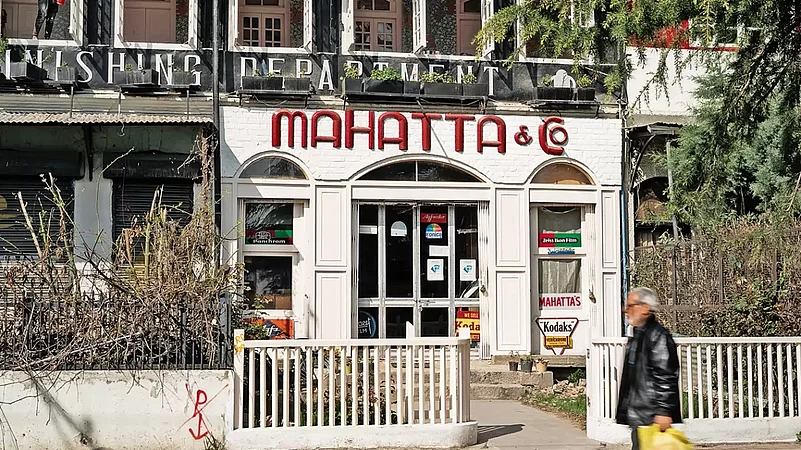
Muhammad joined the studio in 1971. There are three others—one joined around the same time that he did. The rest are all freshers. There is not much work for Muhammad these days, but he is still considered an asset by Mehta.
He says when he joined the studio he had no knowledge about photography. “I remember until I joined, I had only shot a single roll while on a family picnic. The studio later became my second home,” he adds.
He learned the technical aspects of photography under the guidance of RC Mehta. The staff would enter the darkroom at 10 AM and come out at 7 PM. The flow of customers used to be non-stop, and they would get very little time for themselves. He was paid Rs 35 as his first salary.
The studio is home to exquisite film cameras that were procured from all over the world. “We had some rare cameras that were only available at our shop. I have had the privilege of using them,” says Muhammad. He remembers using the plate film camera that was used to take group photos. The camera is still functional and is kept on display at the studio. It was used to take photos at grand ceremonies, mostly in government departments when an employee retired. They would ask for multiple copies so that everyone could get one. Sadly, it doesn’t happen anymore. Now everyone takes pictures using their smartphones.
Back in the day, it was a huge challenge to learn photography. “We had to set up exposure and focus manually. It was all about trial and error. And then we had to wait till we developed the images to see what we had clicked. It needed a lot of experience and patience,” says Muhammad.
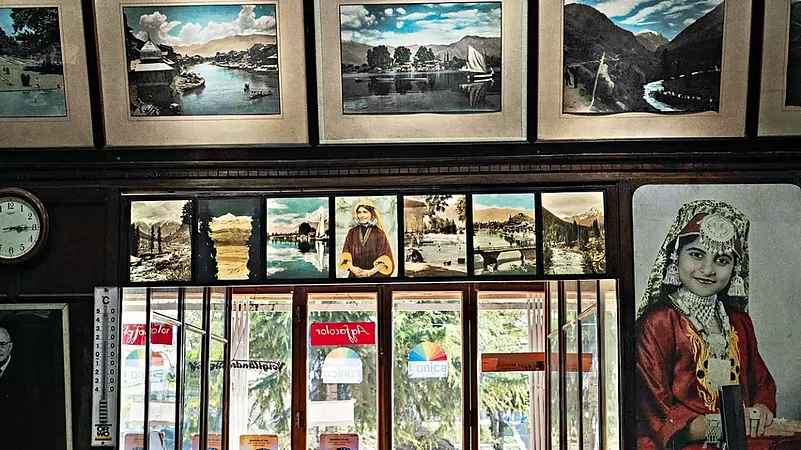
Photographing a wedding was especially tough. “Photographers had to carry 20-30 film rolls with them. They had to be mindful of the facial expressions of the bride and groom and click very thoughtfully as they had a limited availability of rolls,” says Muhammad.
There was an era of videography as well, but Muhammad never got time to learn it. The owner was keen to send him to Germany to train in videography, but it did not materialise.
Film photography is obsolete now. Mehta, a photography enthusiast himself, hopes it gets revived so that they can start using their darkrooms and developing machines. The 2014 floods were devastating. While the staff could save most of the machines, equipment, and cameras, developing machines are now dumped in the attic. “We want to start using them. But it depends on a lot of factors like the availability of inventory which is very expensive and also the interest of people in analogue photography,” says Mehta.
Muhammad wants more and more people to know about the art of film photography. He feels an art form may fade with time, but it never dies. It takes different shapes from time to time. According to him, digital photography is not an art. He tried his hand at it, but it did not excite him “because a photographer can edit a picture even before he clicks it”. It, however, is “time-saving”.
The most treasured possession at the studio is the archives section which dates back to the 1920s. There are images from every corner of Kashmir. The studio provides access to the archives to locals as well as all those visitors from across the country and the globe who wish to explore the visual history of Kashmir. Prints of archival photos are on sale.
The last film roll that Muhammad developed was in 2005. Though his hands shake now due to old age, he is confident that he can still develop a film roll manually.
An attempt is being made to make a digital archive of every photo that is available with them. Digitalisation will make it easy for people to access historical pictures of Kashmir.
Muhammad looks around and says the whole neighbourhood has changed but the studio has retained its old-world charm. It has rented some of its space to a cafe. It is presently providing only printing facilities and Mehta says they may monetise it in the future.
Until that happens, the studio is a good platform where budding photographers can learn about the raw art of photography and see how it has evolved over a period. The archives will certainly help them enhance their visual sense. Many photography enthusiasts visit the studio to gain knowledge about film photography, or to revisit the history of analogue photography.
In 1995, when digital cameras were introduced, the production of film cameras decreased subsequently, which affected the business.
The last film roll that Muhammad developed was way back in 2005. After that he never got the chance to mix the chemicals again. Though his hands shake now due to old age, he is confident that he can still develop a film roll manually even though he has not done it for the past 15 years.
He is so experienced that he can tell the exact temperature of a chemical just by dipping his finger in it.
Muhammad was in awe of photography and would love to get himself photographed every week. When asked if he would want to click pictures again as he used to, Muhammad smiles and says: “I had three personal cameras. I still have them, but I don’t use them anymore. I sometimes feel the urge to shoot with a film camera again, but I am not sure if there are people who would develop my roll. What if it gets damaged in transit? What if he uses extra chemicals? What if there is a light leak in his dark room that he isn’t aware of?”
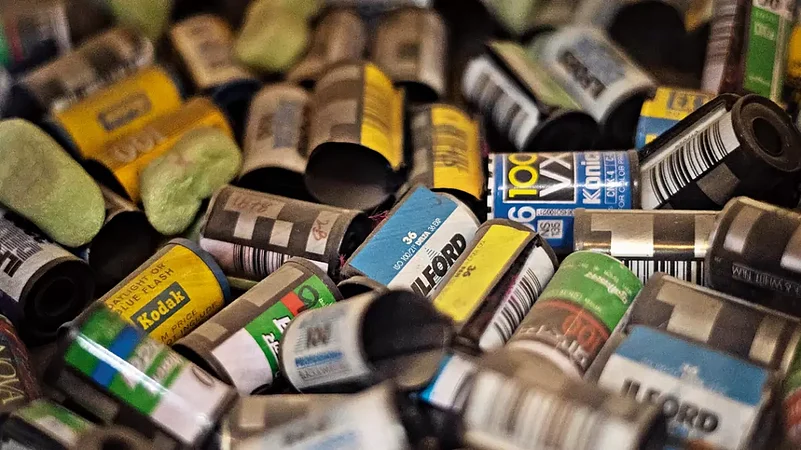
The shop used to have at least 20 employees when there was a boom in the business. But now only four are working here. The salaries have remained the same but it’s difficult to make ends meet with the same money in the present times. But Muhammad is not bothered about money. His twenty-four-year old son, who chose not to follow his father’s footsteps, earns enough. For Muhammad, it is his deep connect with photography that pulls him to the studio every day. Each day makes him nostalgic.
He recalls that the studio used to sell film rolls under its “M&C” label. A 1,000-foot roll was cut into smaller segments and was sold to the customers. Now only the cartridges are kept in a glass display box.
Earlier, there were almost 10 types of films available in their studio for sale in various sizes. Only two of these are available in the market—35 mm and 120 mm. Back then, the price of a film roll was around Rs 5, but now one has to pay almost Rs 2,000 for the same roll. Muhammad says there are very few people who still practice analogue photography as this art form is very expensive.
The layer of dust settled on empty film rolls is proof that times have changed. Yet, Muhammad opens the shop every single day, on the dot at 11 in the morning, in the hope that this art form will be revived again.
(Views expressed are personal)
Darash Dawood is a multimedia journalist based in Kashmir
(This appeared in print as "Preserving The Past")









